Lecture Notes 13: More CFGs and Intro to Push-Down Automata
Outline
This class we'll discuss:
- More on CFGs
- Intro to Push-Down Automata
Recap: CFGs
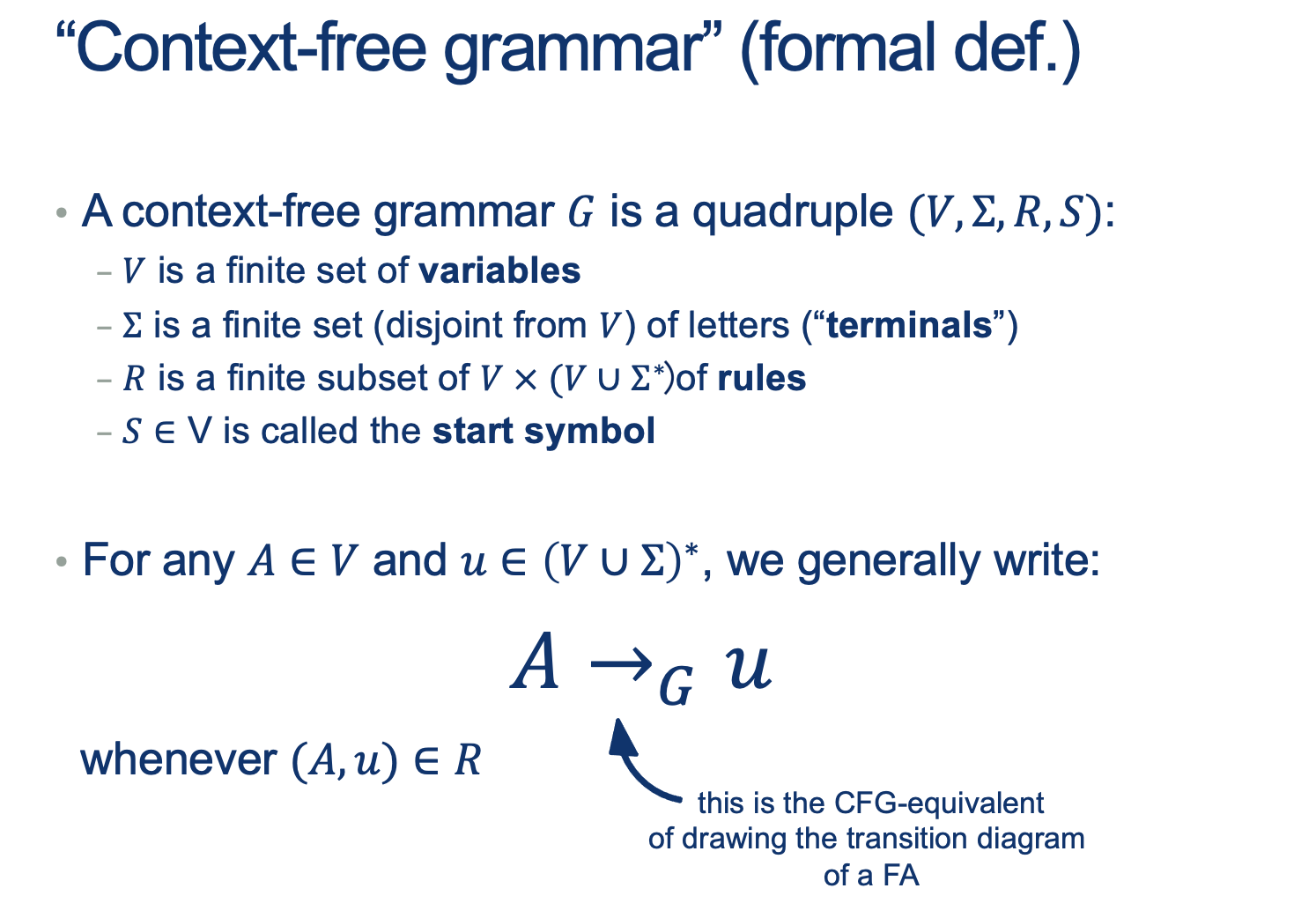
All REs can be created with CFGs
Approach 1: Recursive creation of CFG from definition of REs
For any RE \(R_1\) We can produce a CFG \(G_1\) by applying the following steps:
- Any base cases can be writen as generation of
\(S \rightarrow_g \emptyset \vert \epsilon \vert a\) for all \(a \in \Sigma \quad from \ R_1's \ \Sigma\)
- Defining the more complex rules requires combining two rules. The recursive expression based on these two base rules can start with:
\(S \rightarrow_g A \) (some expression)
\(S \rightarrow_g B \) (another expression)
and combined to generate more complex expressions:
- Alternation:
\(S \rightarrow_g S_1 \vert S_2 \) (equivalent to A + B for some A, B)
- Concatenation:
\(S \rightarrow_g S_1 S_2 \) (equivalent to A B for some A, B)
- Kleene:
\(S \rightarrow_g S_1 S \vert \epsilon \) (equivalent to \( A^* \) for some A)
Approach 2: RL's are a special case of CFLs
You can convert any DFA into an equivalent CFG as follows.
- Make a variable \(S_i\) for each state \(q_i\) of the DFA.
- Add the rule \(S_i\) → \(aS_j\) to the CFG if \(\delta (q_i,a) = q_j\) is a transition in the DFA.
- Add the rule \(S_i\) → ε if qi is an accept state of the DFA.
- Make \(S_0\) the start variable of the grammar, where \(q_0\) is the start state of the machine.
Verify on your own that the resulting CFG generates the same language that the DFA recognizes.
Activity 1 [2 minutes]:
Try to build your own CFG. One that "Accepts" the language:
\[ L = \{ w \in \Sigma^* \vert w \ has \ an \ odd \ number \ of \ 1s \}\]
(Wait; then Click)
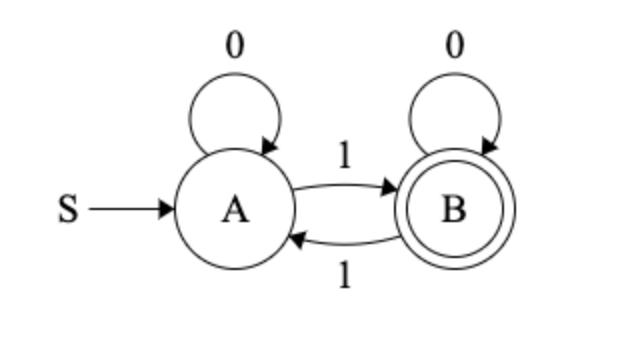
if A is \(S_0\) and B is \(S_1\):
\[
\begin{alignat}{2}
S &\rightarrow_g S_A \\
S_A &\rightarrow_g 0S_A \\
S_A &\rightarrow_g 1S_B \\
S_B &\rightarrow_g \epsilon \\
S_B &\rightarrow_g 0S_B \\
S_B &\rightarrow_g 1S_A \\
\end{alignat}
\]
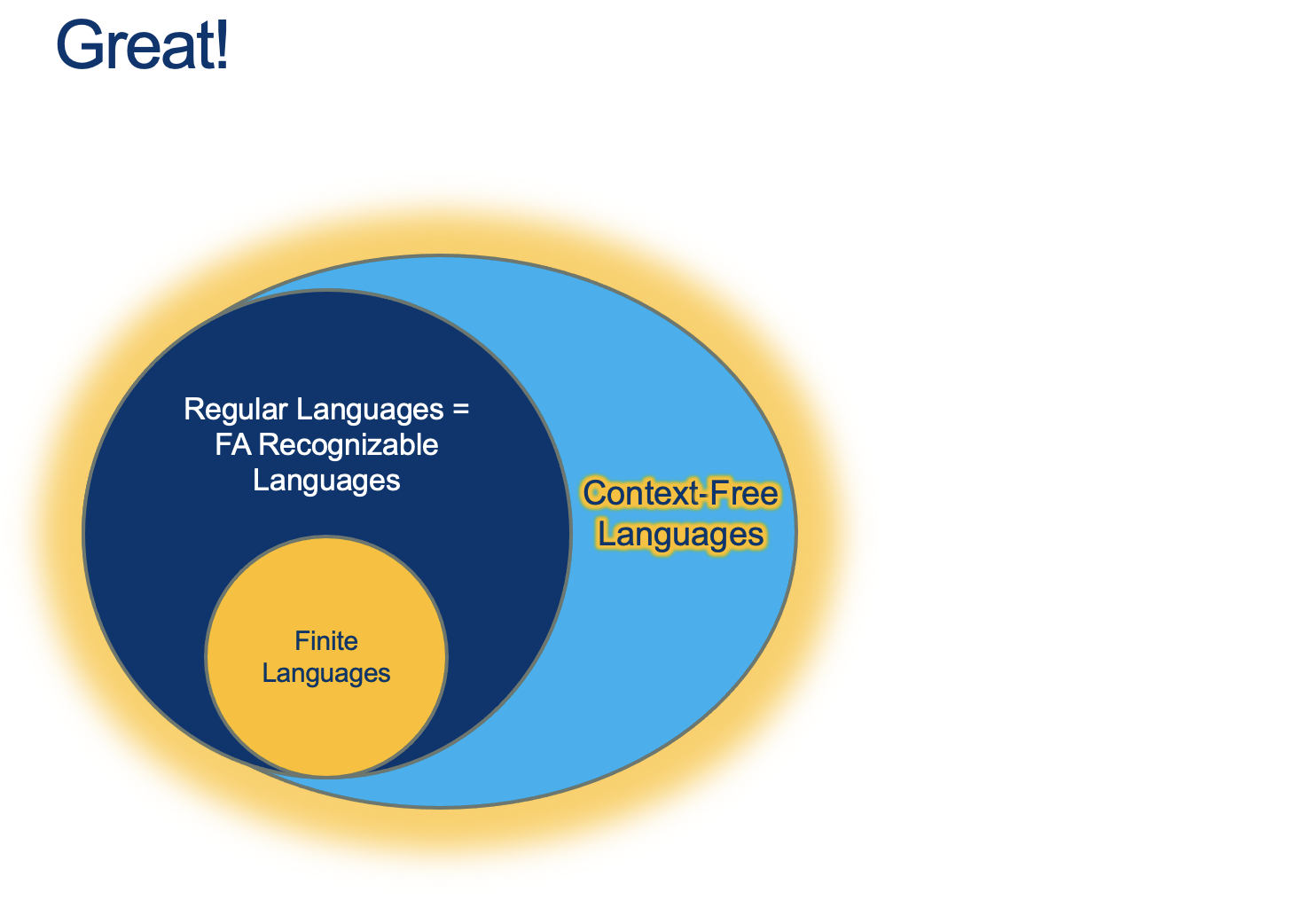
How do we prove there are languages that are NOT (beyond) CFLs?
How did we do this back when we did it for RLs?
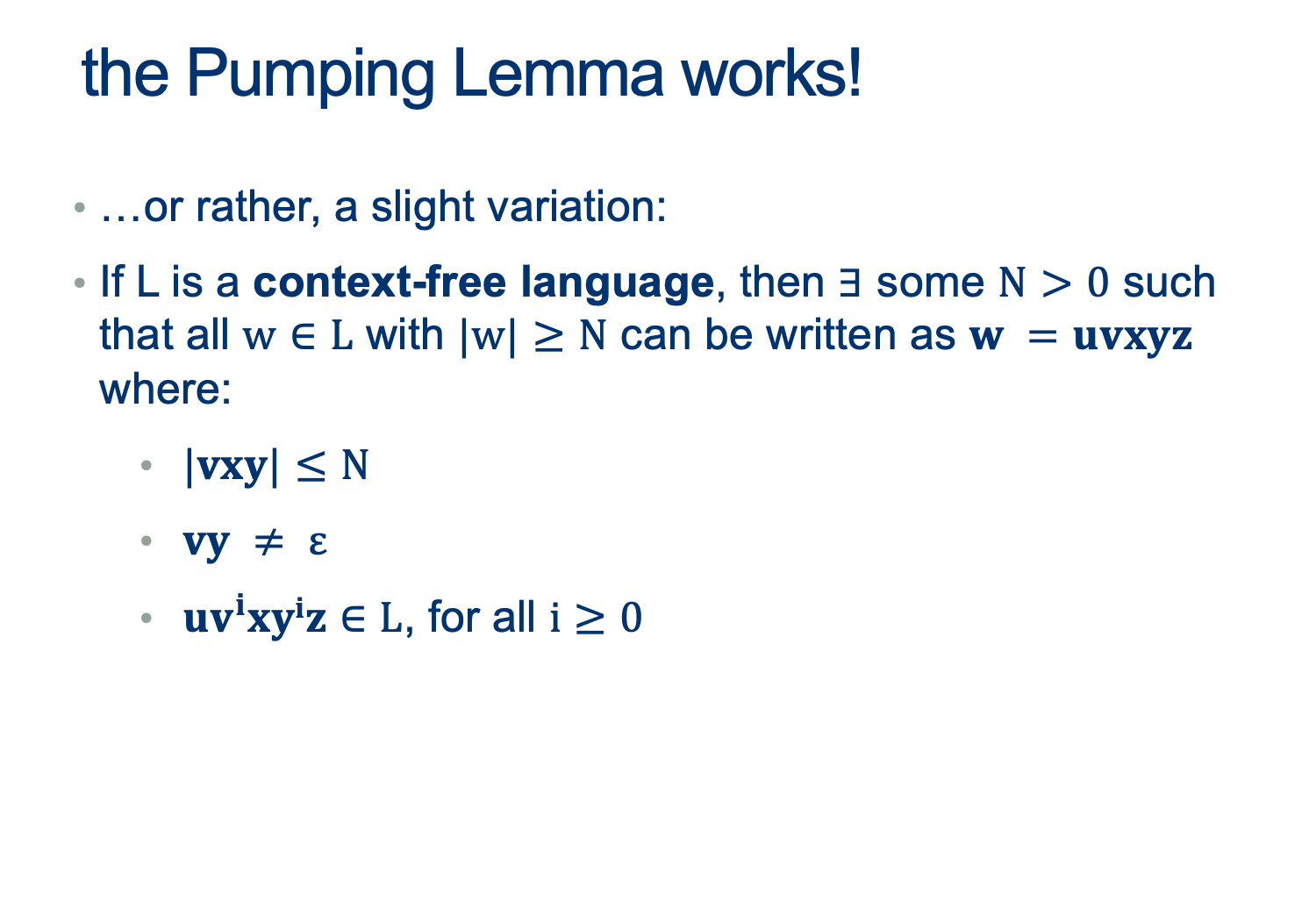
- the middle part is not too big
- v and y (the repeating parts) are not both simultaneously empty
- repeating v and or y we will keep us in the language
Note that RLs are a special case of Context-Free-Languages (without the \(uv^i\)) part.
So, if we have a pumping lemma for CFGs, is there a "Machine" equivalent to the Finite Automatons as well?
We'll see those next class.
Proving a language is NOT context-free
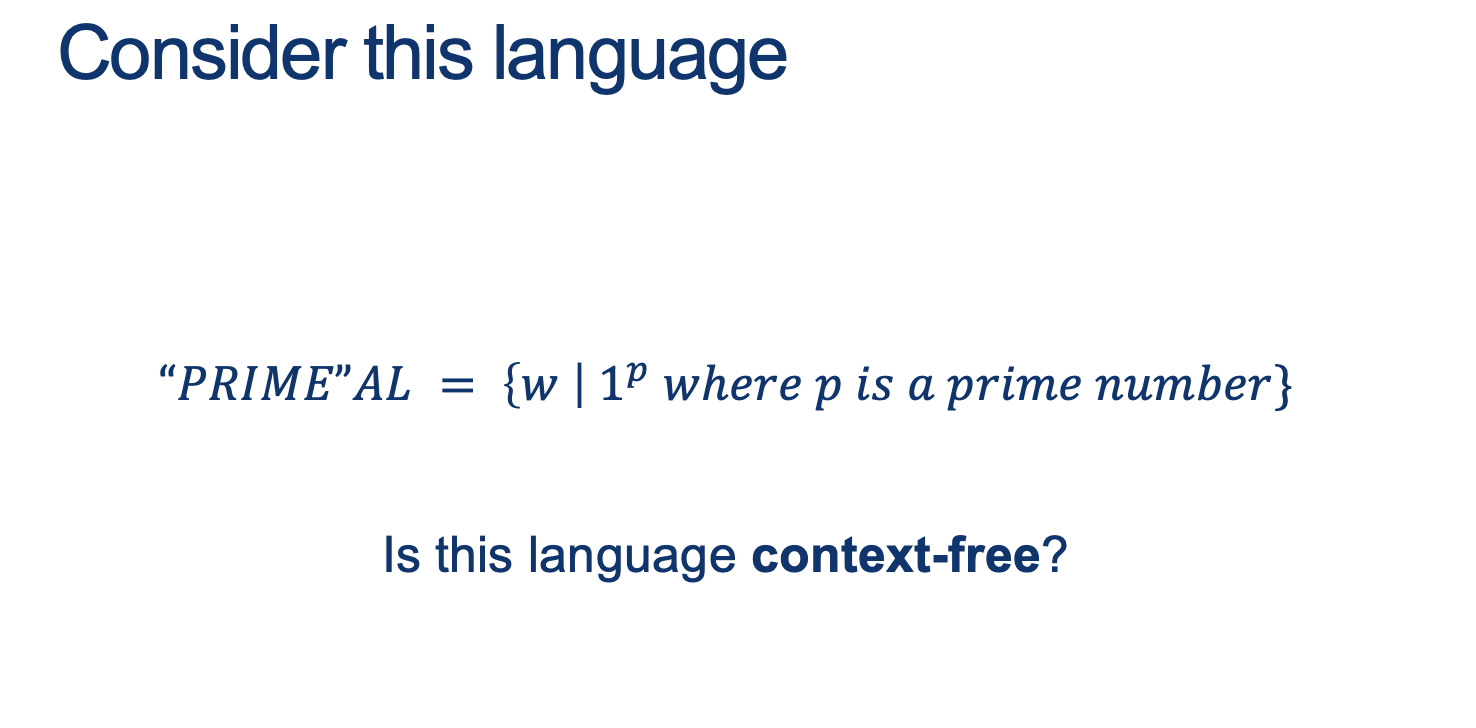
What does your untuition say? Is it a CFL?
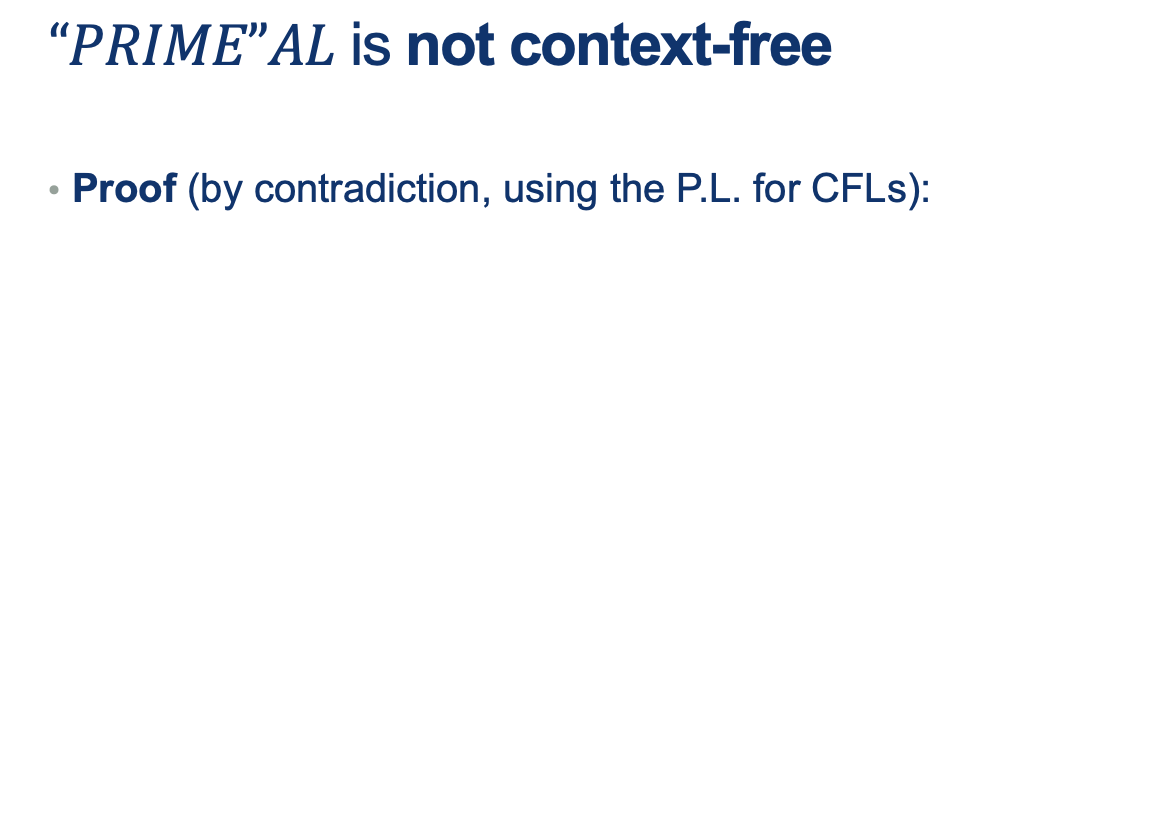
Remember:
- Given a structure of \(w = uvxyz\), and \( \mid vy \mid \geq 1\)
- We want to find an \(i\) for which a word \(uv^ixy^iz\)
does not have a prime length ( \( \mid uv^ixy^iz \mid \) is not prime ) after being "pumped" some number of times.
- Here, we can start with a word \(w\) with length \(p\geq N \) (\(N\) provided by the pumping Lemma)
- Now, the trick is to pump the pattern some number of times so that we can prove that the final length is NOT prime!
- Ideas?
(Wait; then Click)
Steps:
- The length of a word \(\mid uv^ixy^iz \mid \)
is the length of \( \mid w \mid \) plus any added repetitions of \(v\) and \(y\)
- So, \( \mid uv^ixy^iz \mid \) is \( \mid w\mid + (i-1)\mid vy \mid \)
- Since we said \(w\) is in PRIMEAL, then \( \mid w\mid \) is some prime number \(p\geq N \).
- Then, \( \mid uv^ixy^iz \mid = \mid w\mid + (i-1)\mid vy \mid = p + (i-1)\mid vy \mid\)
- Now, What possible choice of \(i\) could we choose to cause the overall length to be provably NOT prime?
(Wait; then Click)
If we choose \(i\) so that the \(i-1\) is equal to \(p\) in the following expression:
\[ \mid uv^ixy^iz \mid = \mid w\mid + (i-1)\mid vy \mid = p + (i-1)\mid vy \mid \]
Then substituting \(i-1\) for \(p\) ( by making \(i = p-1\)), we would get:
\[
\mid uv^ixy^iz \mid = \mid w \mid + (i-1)\mid vy \mid = p + p\mid vy \mid \\
= p (1+\mid vy \mid)
\]
which means that, after pumping, the word is divisible by \(p\)! and therefore, not of prime length.
Why are CFGs important?
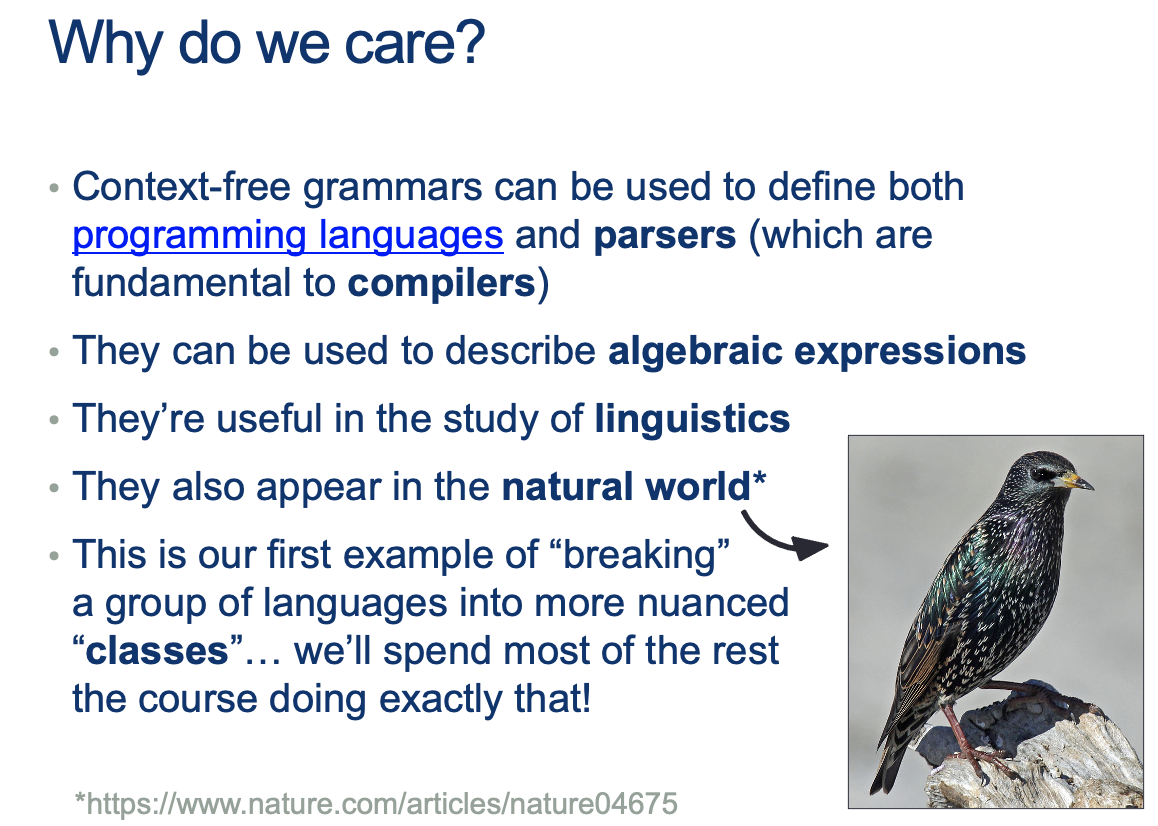
check the article out: https://www.nature.com/articles/nature04675
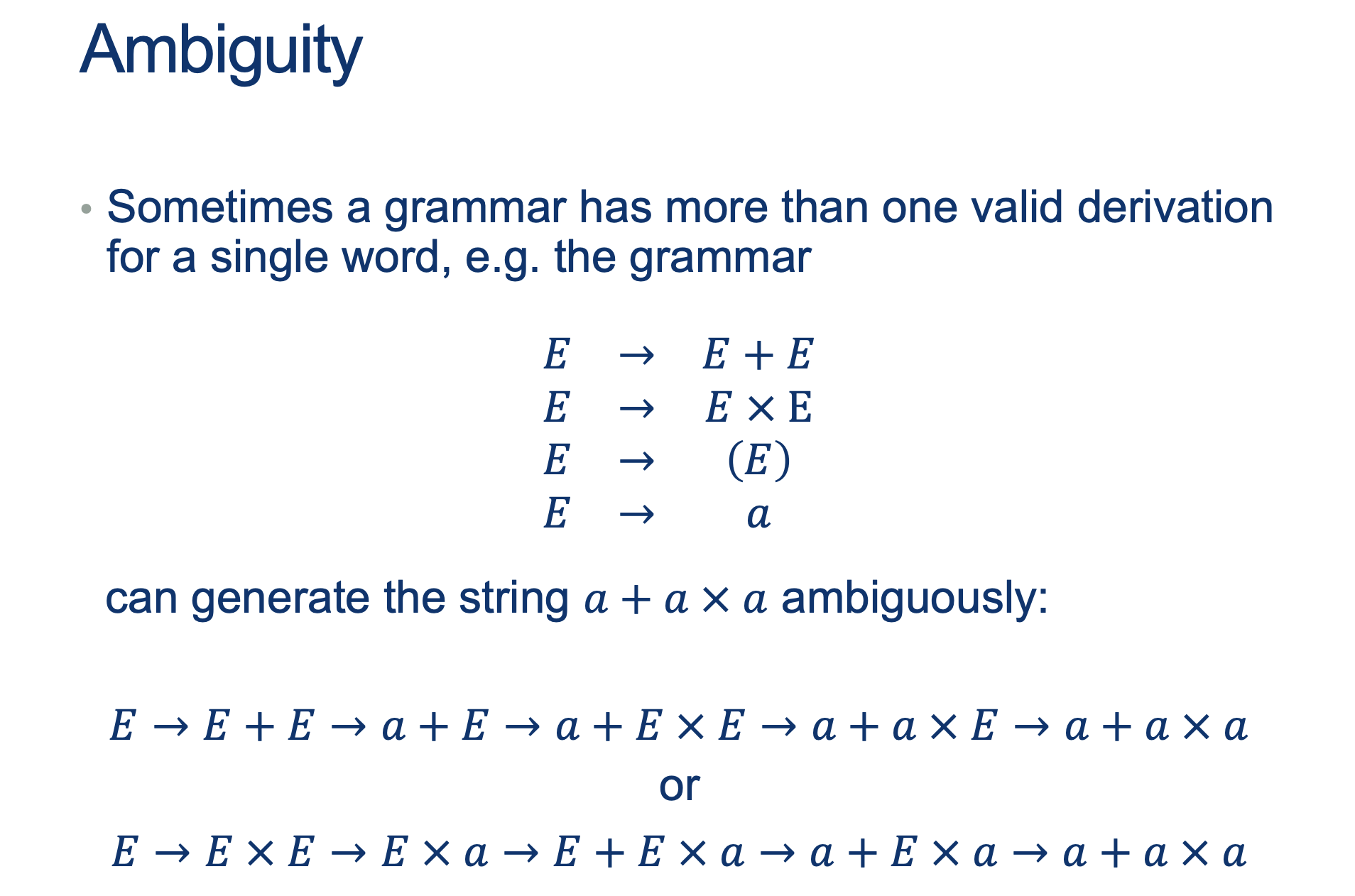
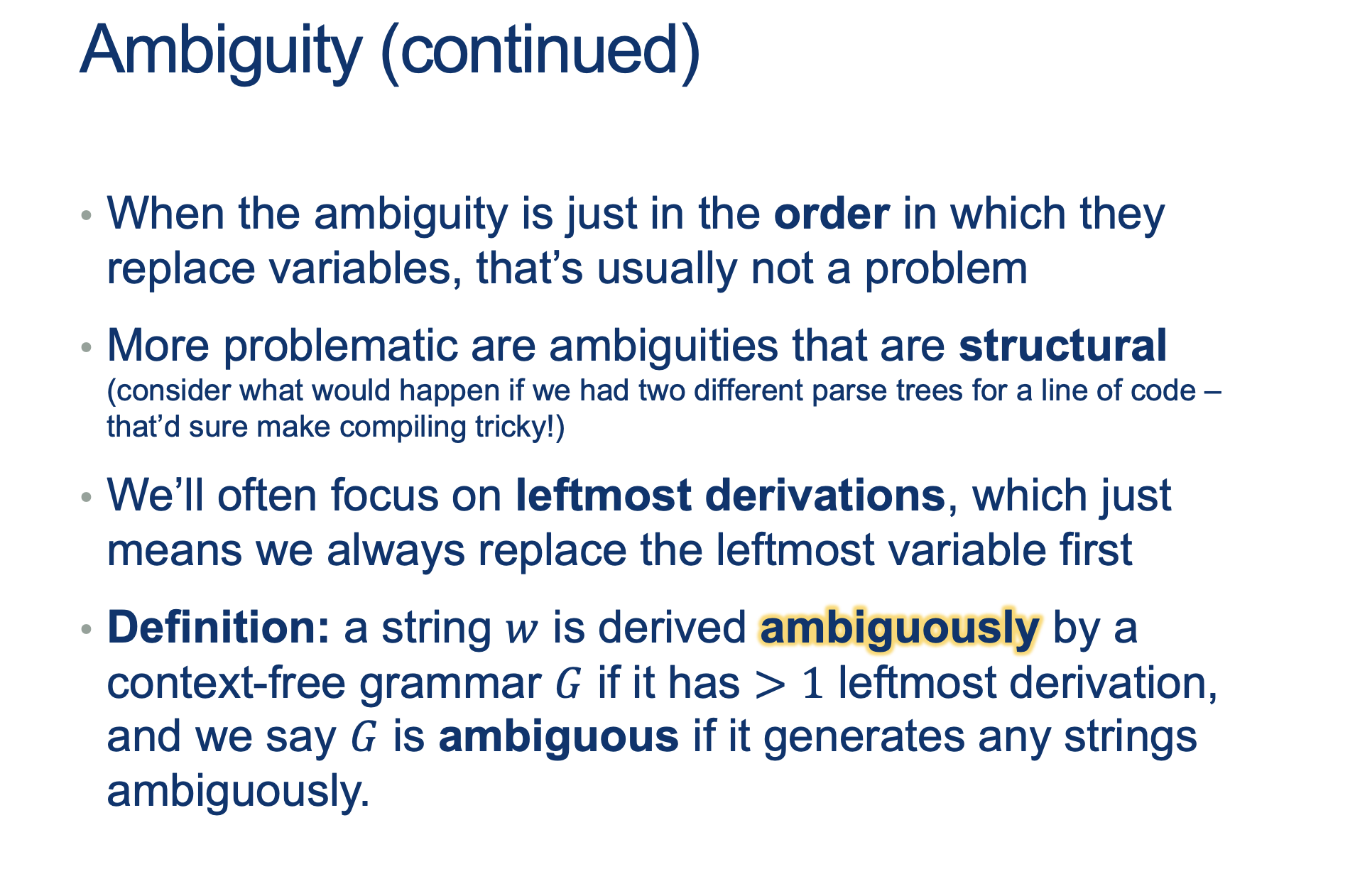
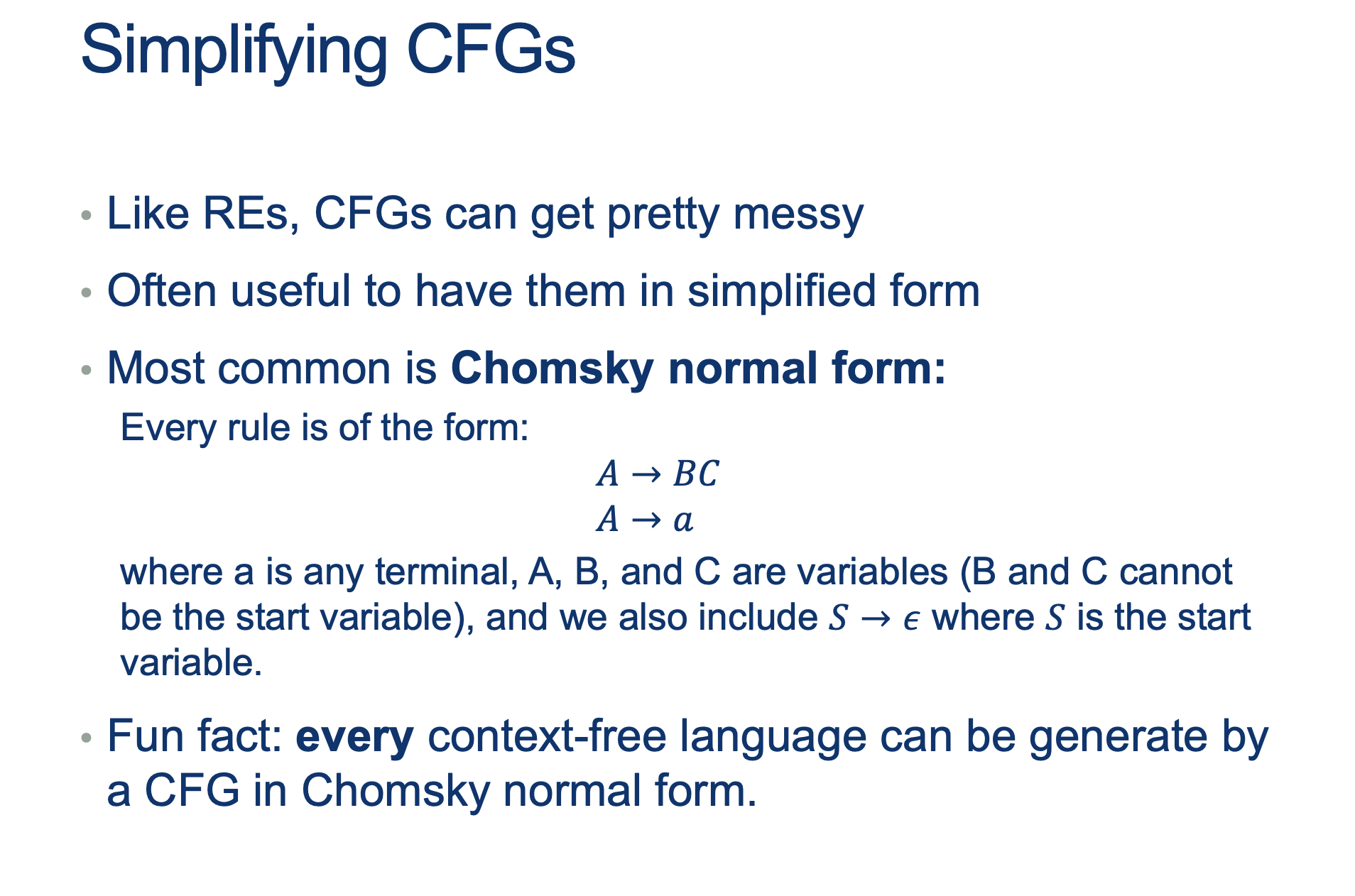
Push-Down Automata

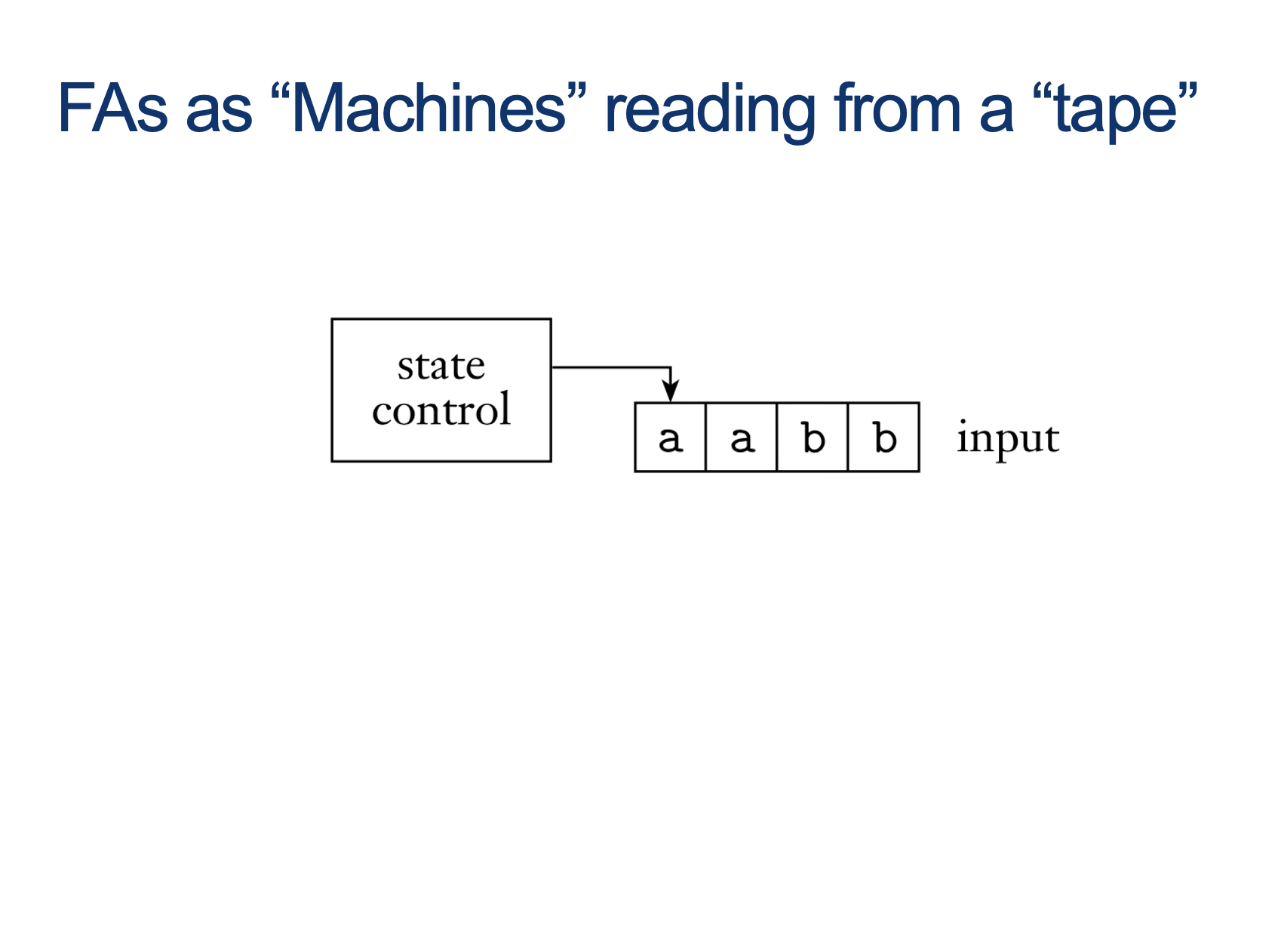
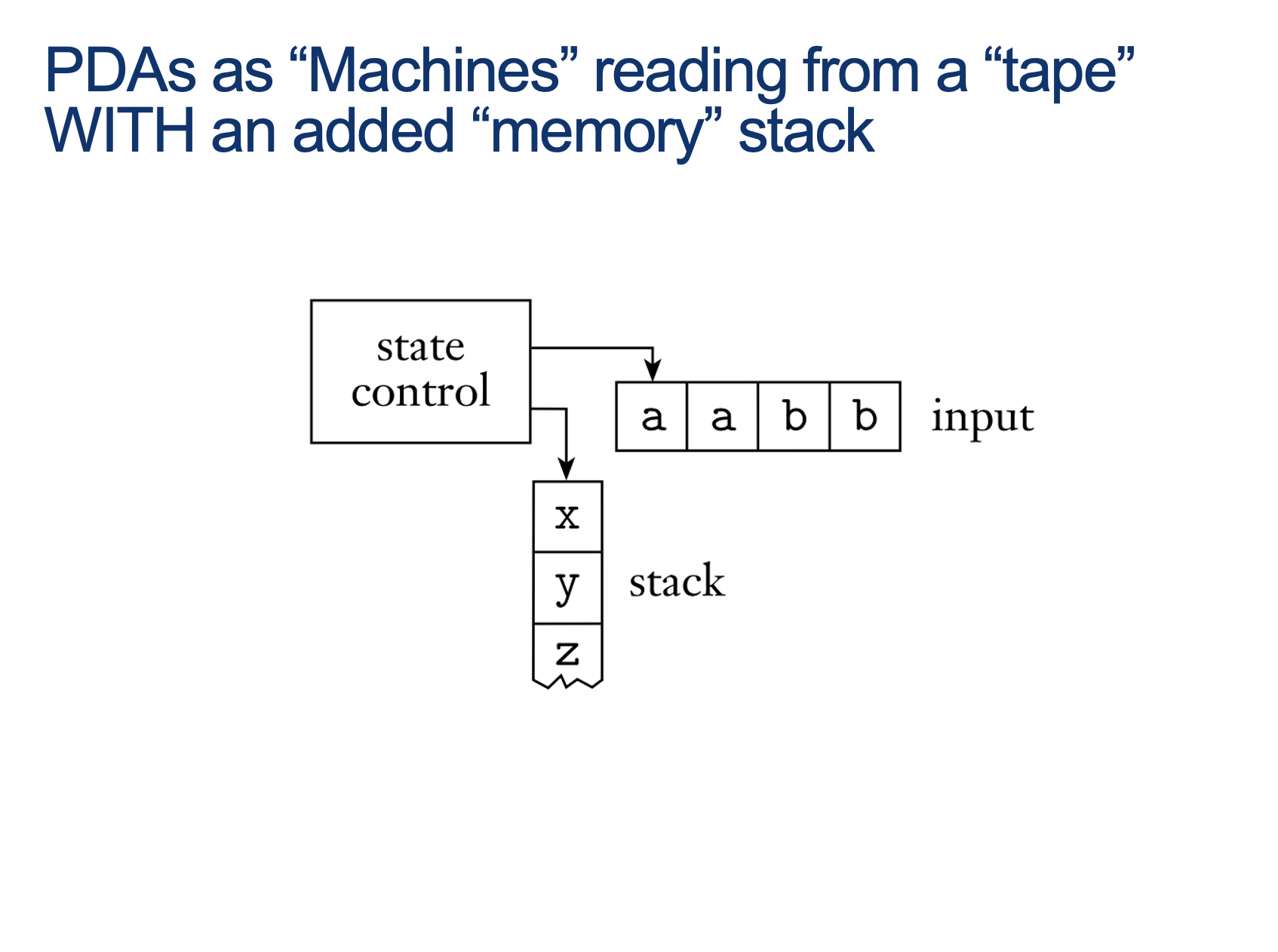
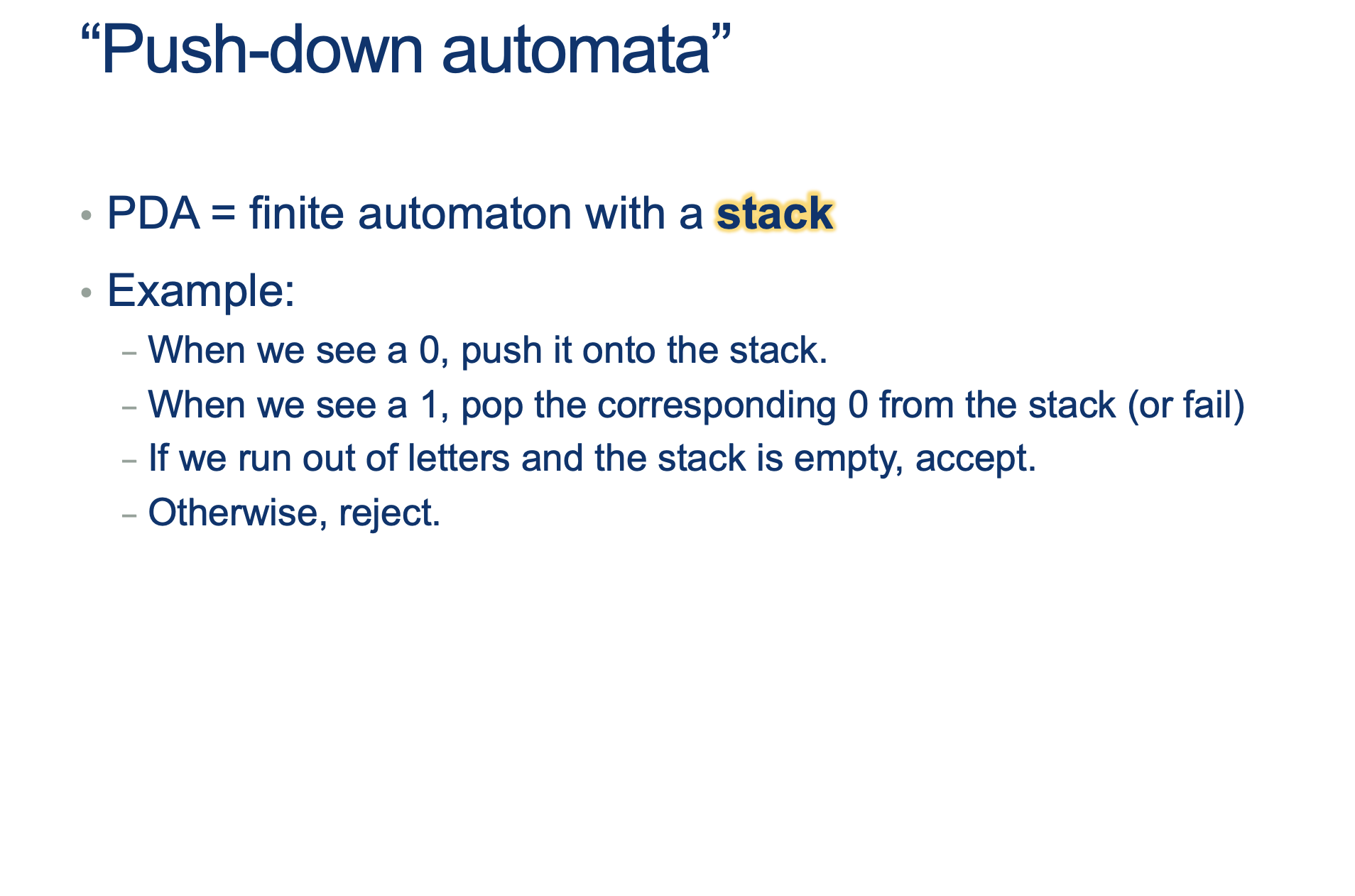
Activity 1 [2 minutes]:
What is the language that these rules are describing?
(Wait; then Click)
- are these a valid words? \(\{ \epsilon, 01, 0011, \dots \} \)
- We know this language!! What is it called?
Now, let's try to buid an automaton that can keep track of all of this
 Notes
Notes
- we need a notation for READ, POP and PUSH... we'll use: \( READ, POP \rightarrow PUSH\)
- we need a symbol for "The stack is currently empty!"... we'll use \(z_0\)
- we need to be able to read a symbol without pushing ... we'll use \(\epsilon\) in place of PUSH
- we need to be able to read a symbol without popping ... we'll use \(\epsilon\) in place of POP
- we need to be able to push without reading a symbol ... we'll use \(\epsilon\) in place of READ
- we need to be able to pop without reading a symbol ... we'll use \(\epsilon\) in place of READ
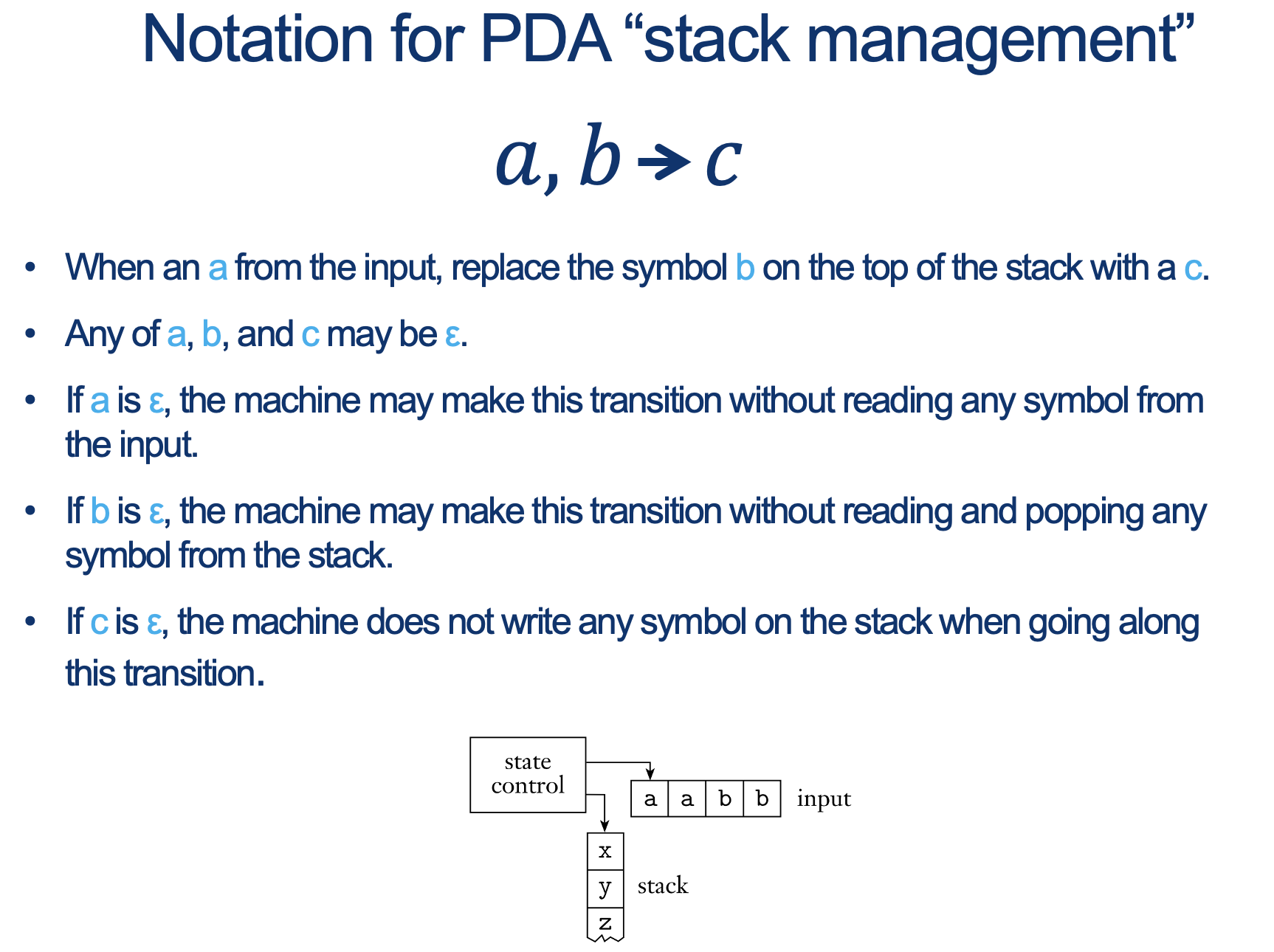
So now, let's draw the PDA for HALF
An example for HALF:
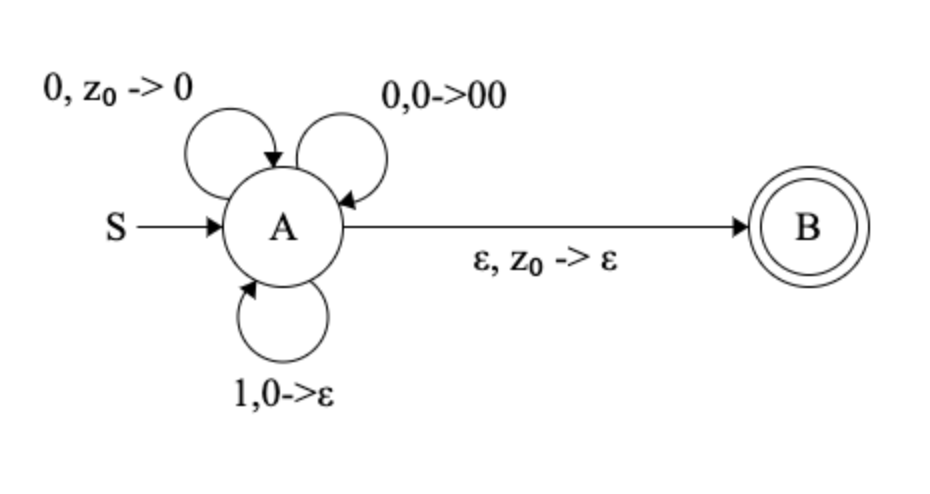
And in a "compressed notation":
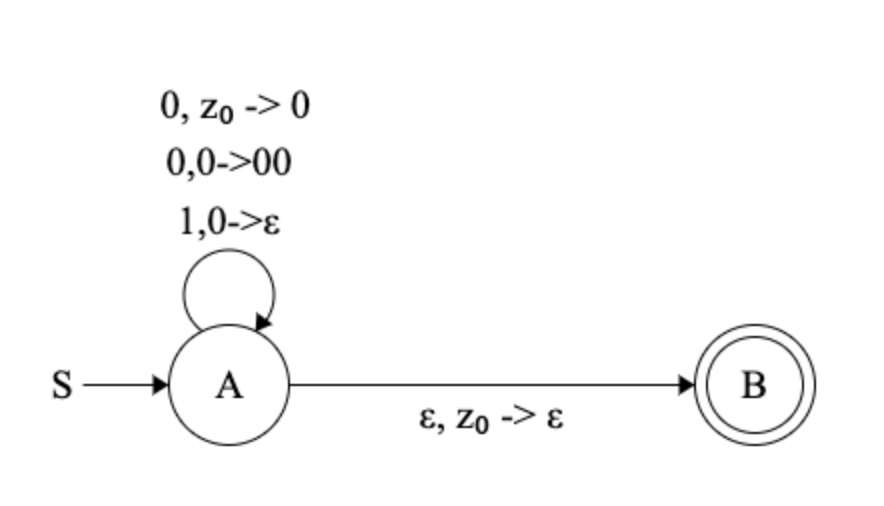
 Note that we defined an Augmented NON-Deterministic Automaton
Note that we defined an Augmented NON-Deterministic Automaton
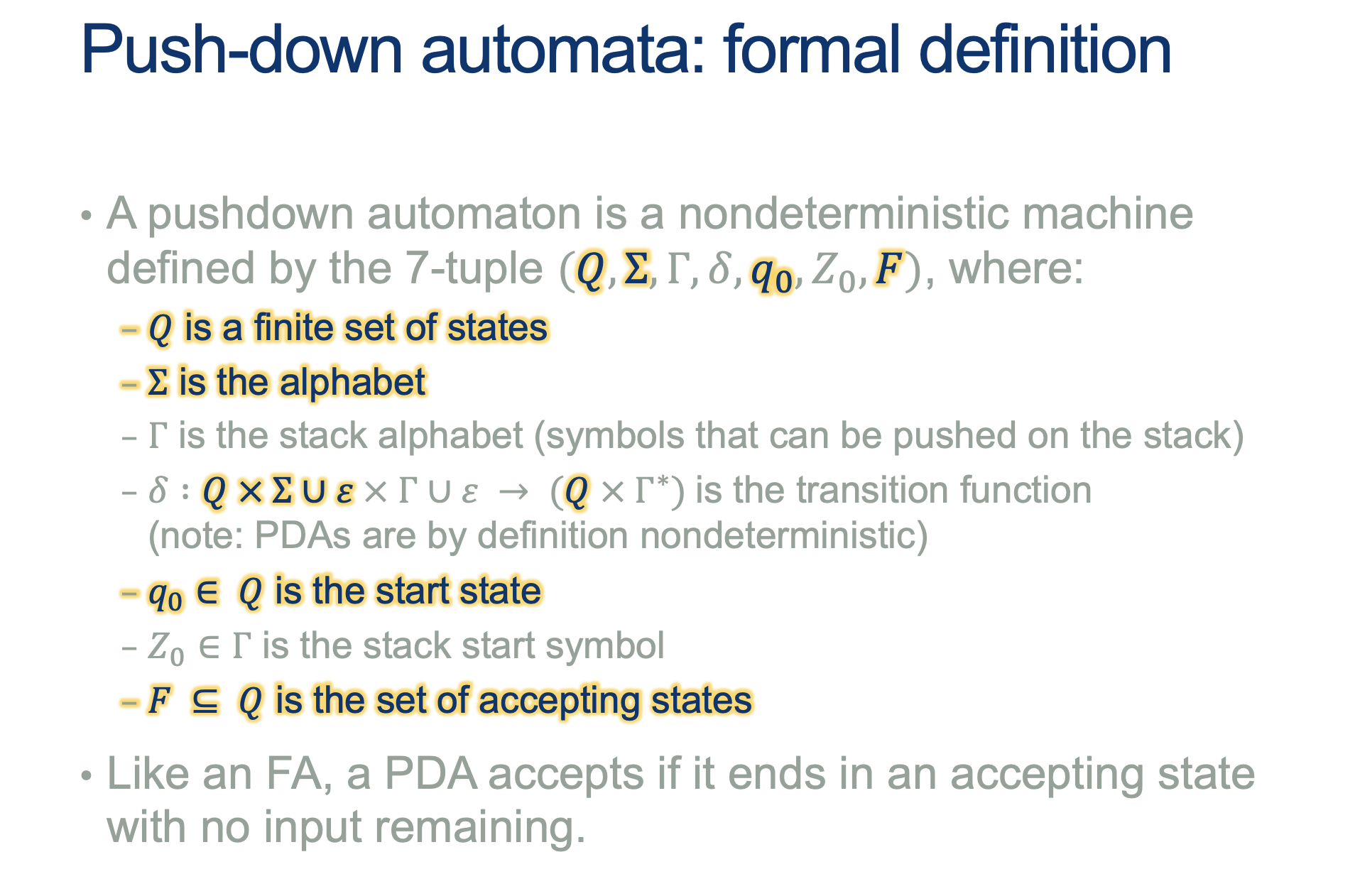
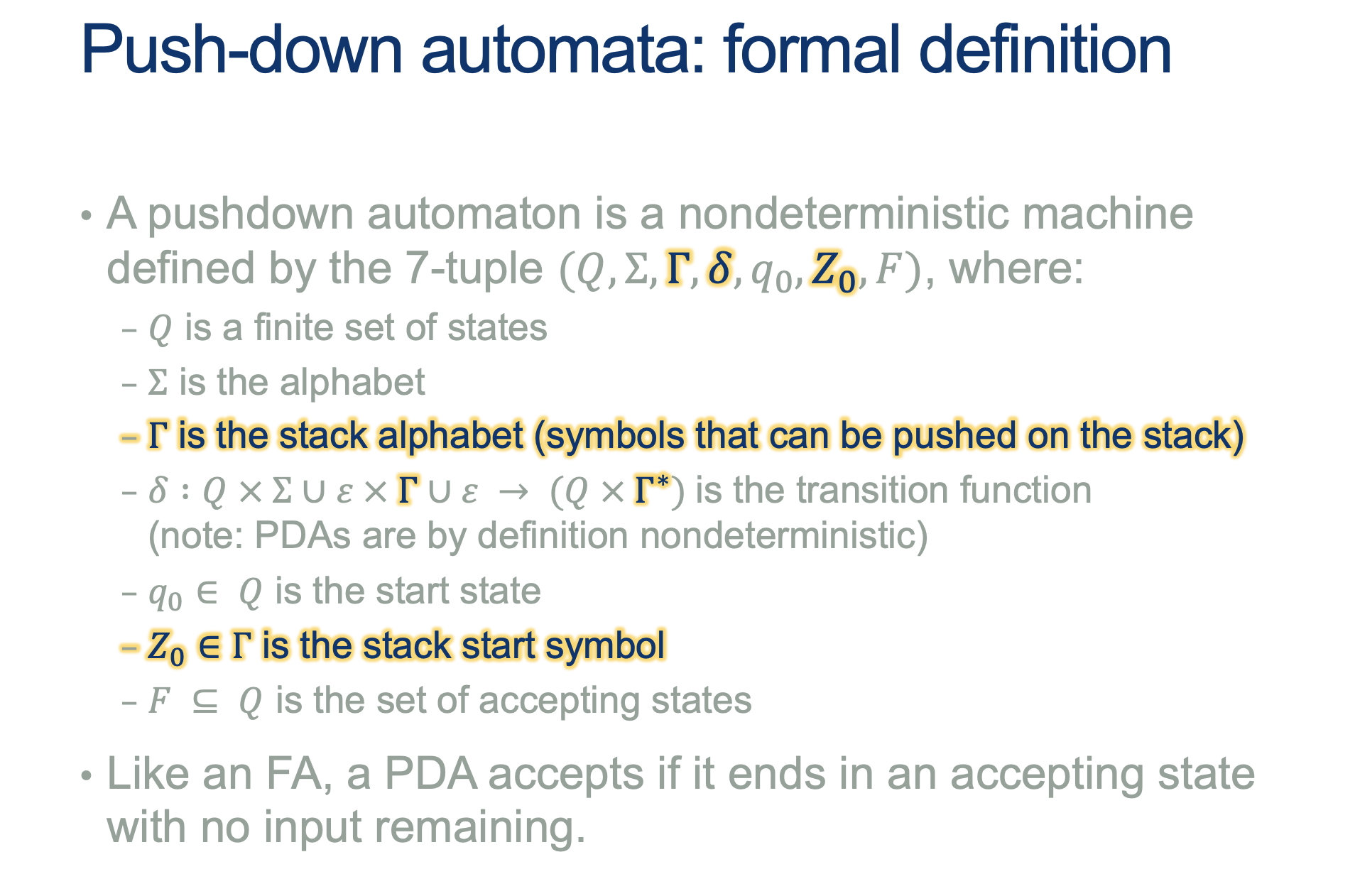
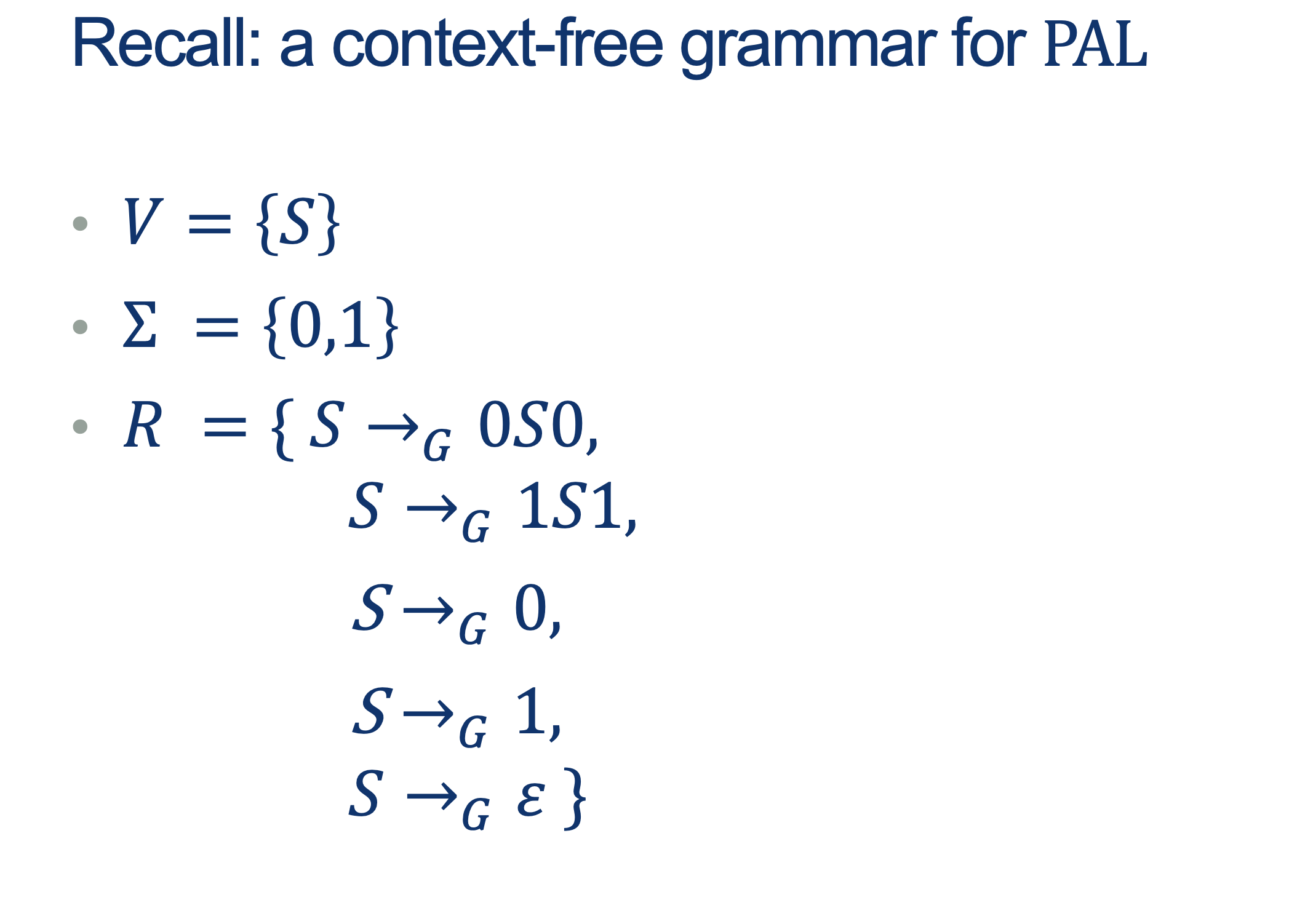
 Tips:
Tips:
- Think of phases:
- memorizing
- middle (even or odd)
- replicating in reverse
- write the PDA... and remember it is NON-Deterministic
Activity 2 [2 minutes]:
Build the PDA for PAL
(Wait; then Click)
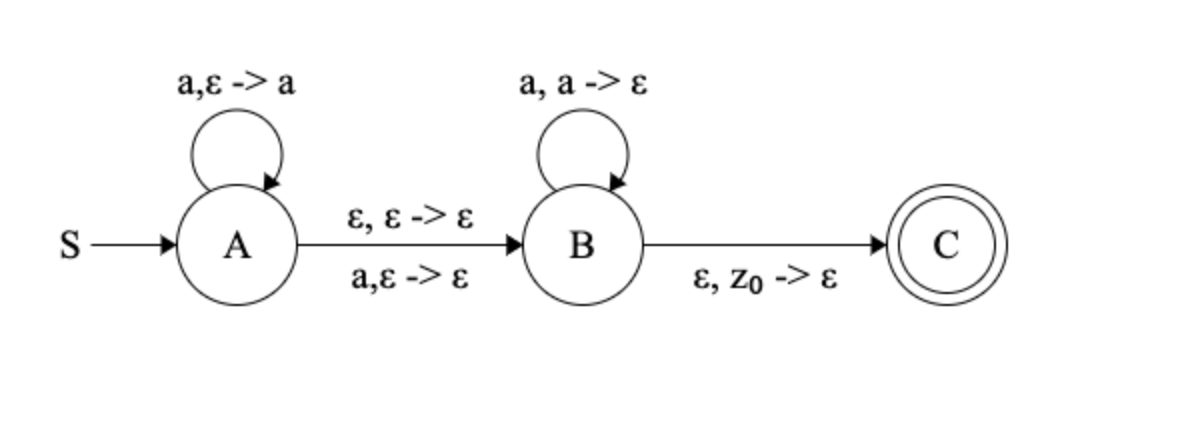
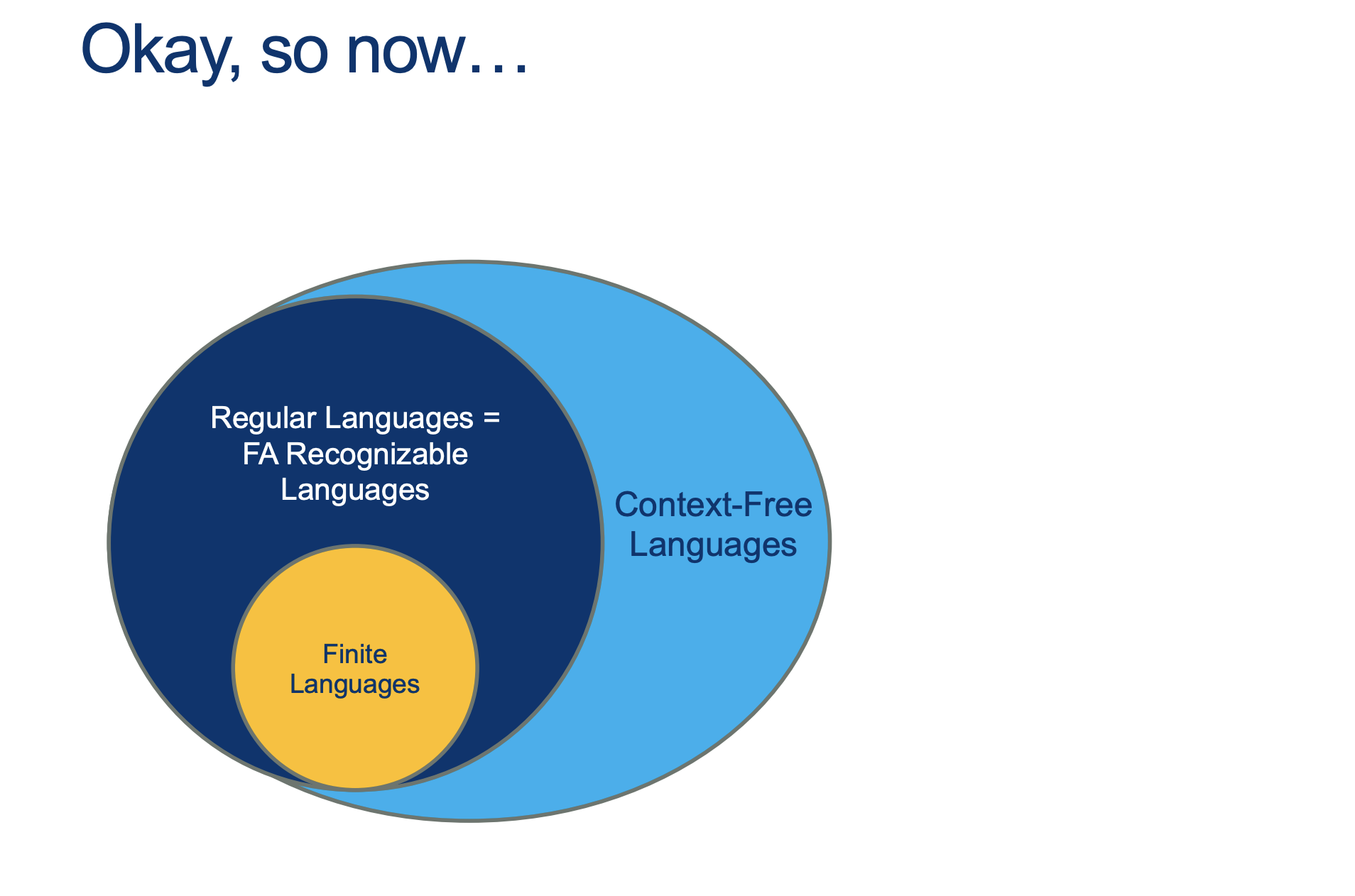
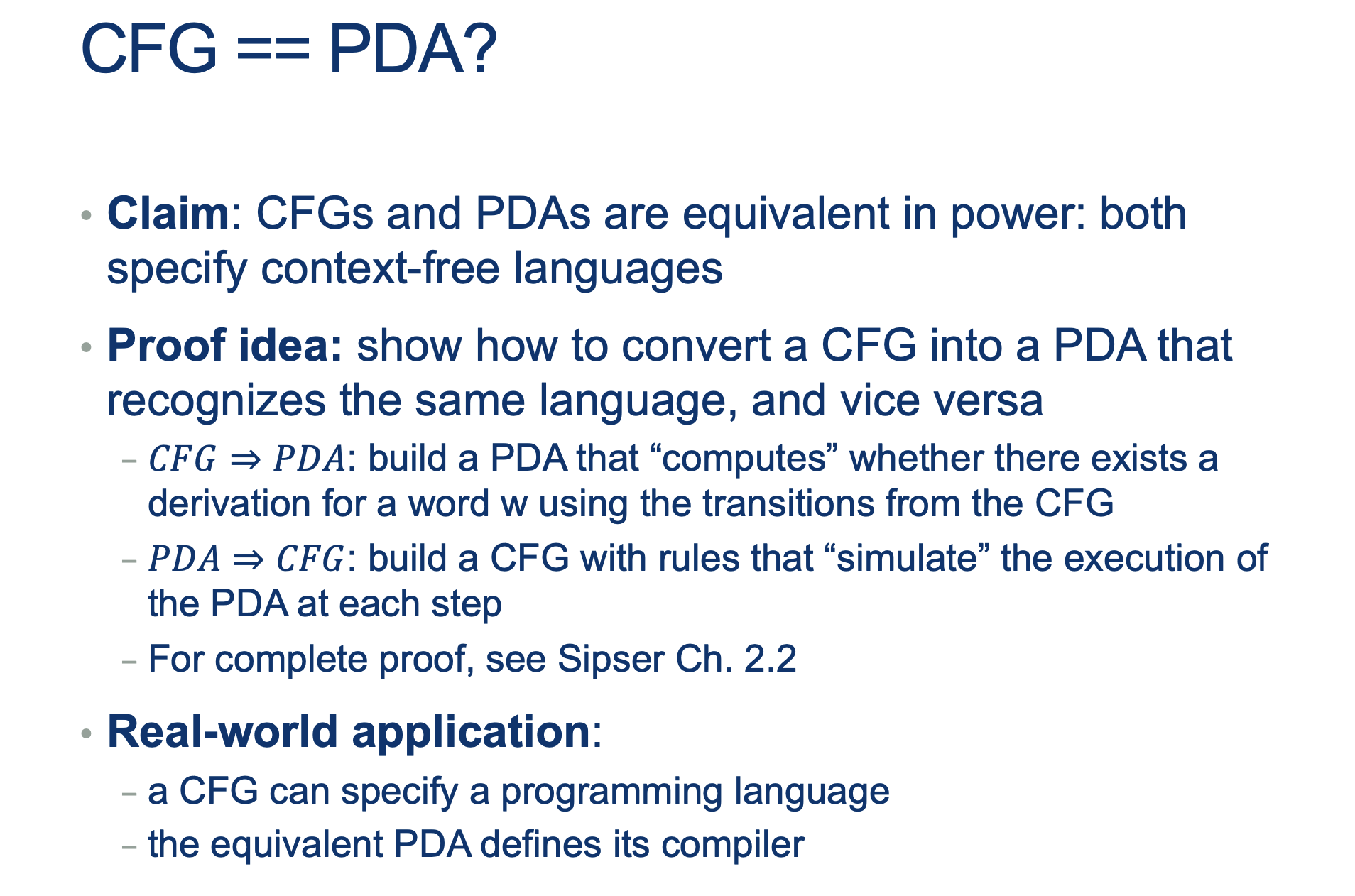
Next class: Practice with CFGs and PDAs
Homework
[Due for everyone]
problem Set 4 due October 13th 11:59 PM
[Optional]
TODO



























